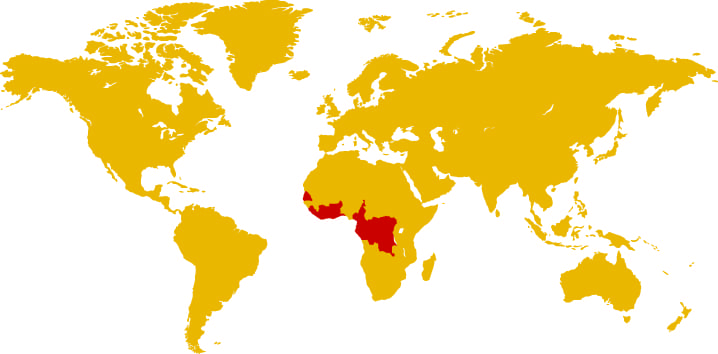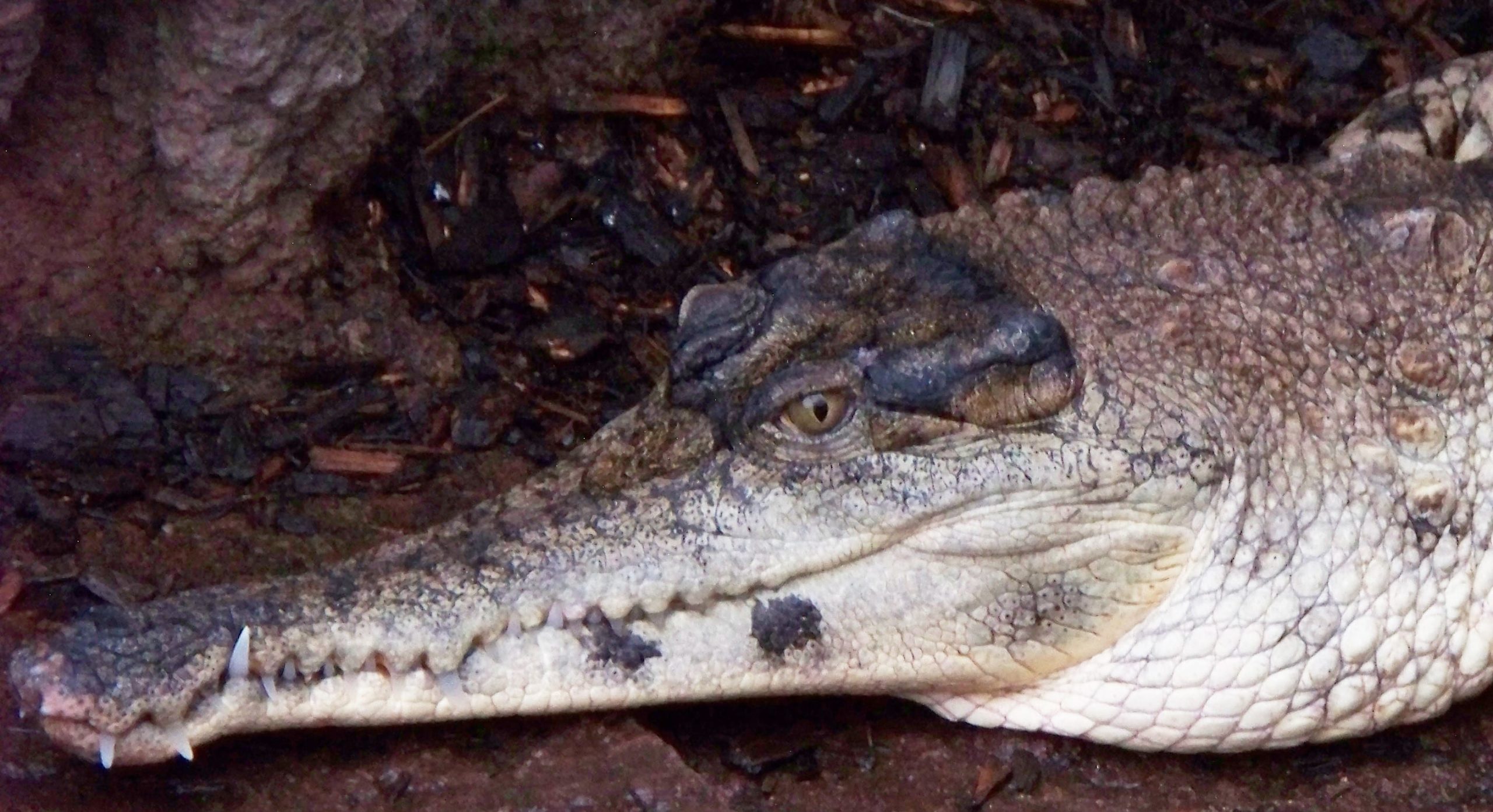The Slender-Snouted crocodile is classified as ‘Critically Endangered’ on the IUCN Red List of Threatened Species.
Red List Category & Criteria: Vulnerable ver 3.1
Year Published: 2014
Date Assessed: 2013-05-30
Population Trend: Decreasing

The species is distributed throughout western tropical Africa from Lake Tanganyika and Lake Mweru in the east/southeast to the Gambia River in the west. It occurs from sea level up to 600m. The species is native to Cameroon; Central African Republic; Congo; The Democratic Republic of the Congo; Côte d’Ivoire; Gabon; Gambia;
Ghana; Liberia; Sierra Leone; Tanzania; Nigeria; Guinea; Senegal.

This species prefers forested rivers and other densely vegetated bodies of water (e.g. reservoirs and freshwater lagoons), but has also been found in sparsely vegetated, gallery habitats within savanna woodland (Waitkuwait 1989, Shirley et al. 2009).
Like most crocodilians, the young crocodiles feed primarily on small fish and a variety of invertebrates; adult animals are primarily piscivorous (fish-eating) although they have been observed to consume mammals, turtles and birds. Gabonese fishermen have also reported it feeding on aquatic snakes.
To date the only known conservation actions for this species are not targeted specifically at it but rather at communities and landscapes (e.g. national parks and national legislation). Threats to
the species now include habitat loss, fisheries that reduce prey base, and limited hunting for the bush-meat trade.
Project Mecistops is an initiative in Côte d’Ivoire that is working towards reintroduction of the species using a captive breeding programme.
Est. wild population: Considerable uncertainty, but estimated to be between 1,000-20,000
Main conservation threats: Habitat destruction, and hunting#



